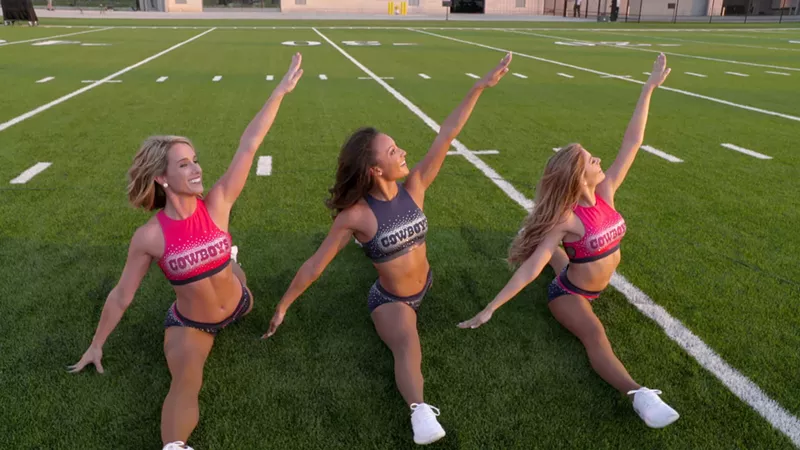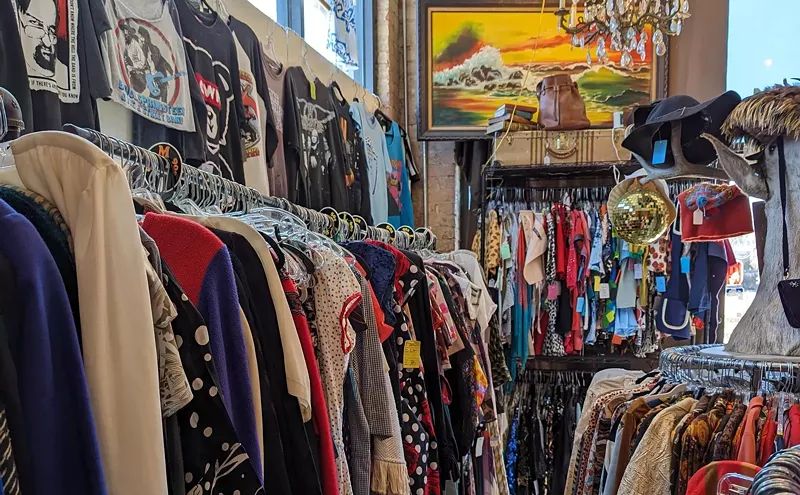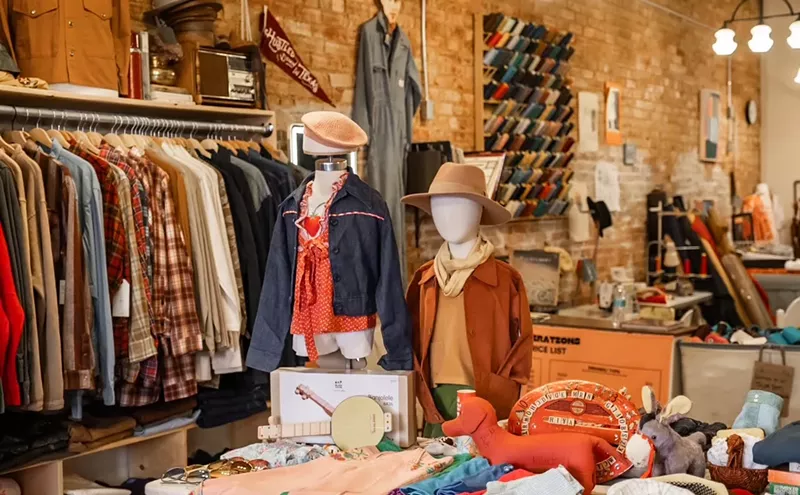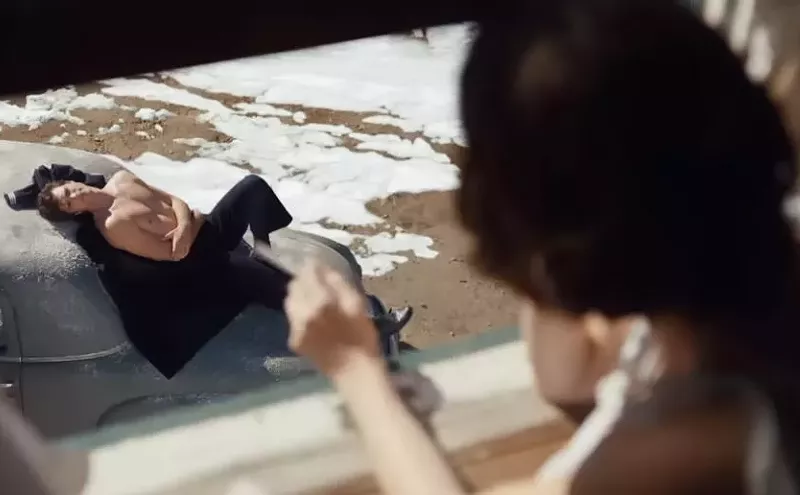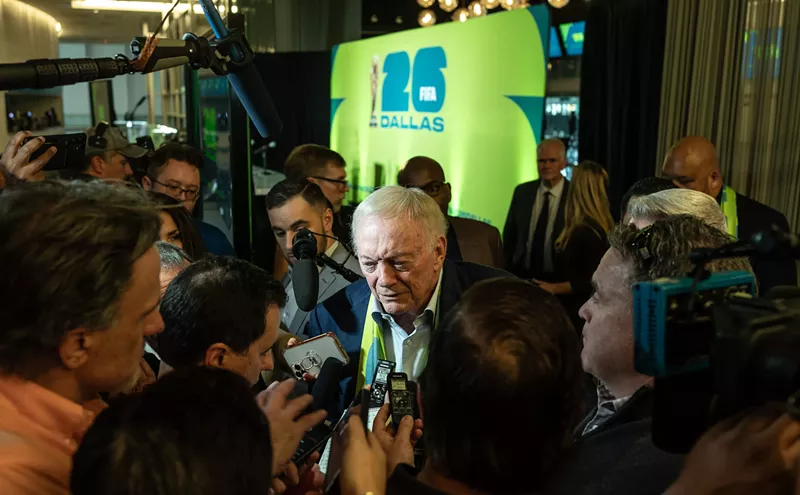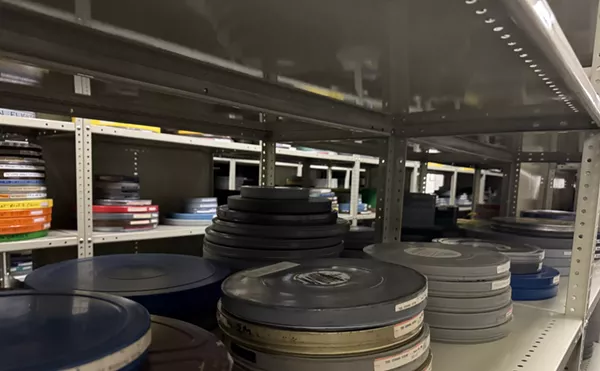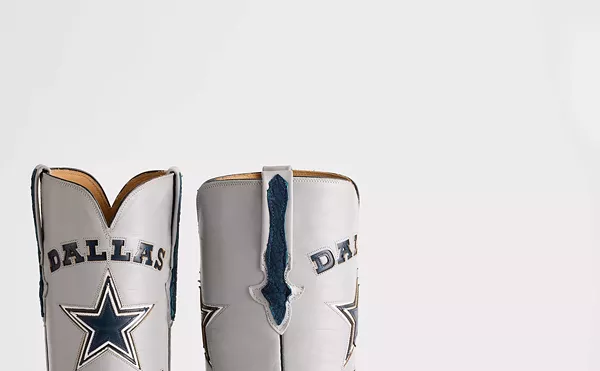Since the premiere of America’s Sweethearts, fans have started a trend on TikTok reenacting one of the squad's routines. But they're also demanding better pay and treatment for the Cowboys Cheerleaders, who revealed that their pay was only around $12 per hour and $400 per game. As a result, some fans have written petitions via Change.org. As we approach the 2024 NFL season, training camp for the cheerleaders is underway, and it appears that some viewers and fans have hope that the docuseries and the backlash will incite change.
When director Greg Whitley captured the Dallas Cowboys Cheerleaders over a year, he sought to create an “authentic portrait of one of the most storied and beloved institutions we have in American pop culture,” as he said in a press statement. The series' unfiltered nature (despite some of the subjects being tied up with NDAs) has prompted much discourse on body image and pay equality.
In the series, fourth-year Cowboys Cheerleader veteran Victoria Kalina was open about her struggles with eating disorders and mental health, saying, "Whenever I get into a bad depression, I turn to bad coping skills, which causes bad eating habits. And as a dancer, the hardest thing you can fight are eating disorders plus depression."
Since the premiere, many viewers immediately pointed to the Cowboys Cheerleader director Kelli Finglass as the villain.
“Kelli Finglass I am praying for your downfall daily,” wrote one viewer on X. “If you have 1 hater it’s me, if you have no haters I am dead & gone from this earth. Count your fkn days. I will read EVERY memoir that comes out once you retire & those NDAs expire & those girls can finally fuckin GET YOU!!”
Another fan posits that the docuseries, as well as Kalina’s mental health revelations, barely scratch the surface.
“I can’t even imagine how many women Kelli Finglass and Judy Trammell have sent into extremely unhealthy eating habits and lifestyles,” posted another viewer.
Neither Finglass nor representatives of the Cowboys responded to our request for comment. However, Finglass, whose salary is estimated to be $1.5 million annually, has since gone on record to defend the cheerleaders’ pay.
“The cheerleaders are paid for all rehearsals, performances, appearances,” Finglass said via Netflix's Tudum. “They’re paid for all time worked, and it’s increased through the years. Outside of that, they’re part-time employees — like any company, we don’t quote specific wages or salaries.”
Kelli Finglass I am praying for your downfall daily. If you have 1 hater it’s me, if you have no haters I am dead & gone from this earth. Count your fkn days. I will read EVERY memoir that comes out once you retire & those NDAs expire & those girls can finally fuckin GET YOU!!
— strega nonna (@saltymisc) July 9, 2024
But sugary PR quotes can only hide so much. Elsewhere in the docuseries, DCC alumna Caroline Sundvold is seen walking on crutches or using a walker. The documentary reveals that the Cheerleaders are allotted a maximum of five years on the squad. Over Sundvold’s five years, she said on the series, her jump-splitting resulted in her hips tearing to the point of requiring surgery along with foot surgery. Through her long run on the DCC, Sundvold shared a studio apartment with her sister Anna Kate when the series was filmed.
Despite the medical toll her time as a Cowboys Cheerleader took on her, Sundvold still looks back on the experience positively and even encouraged her sister to try out for the squad.
Asking For a Bigger Serving of the $9 Billion Pie
But now that this is all out in the open, where do the Cowboys Cheerleaders go from here?One of the cheerleaders we meet in America’s Sweethearts is Ariana McClure, who moved from California to Dallas in hope of making the coveted cheer squad. At the time of filming, it is McClure’s second attempt, having been cut during training camp the previous year.
McClure told the BBC that she had started seeing a therapist to cope with the stress of the intense training and that therapists and mental health professionals should be offered to each of the cheerleaders.
"My therapist was great, but she's not a dancer, or wasn't an athlete," said McClure. "And so having just some tools offered for the girls to talk to would be really beneficial."
In a statement, reps for the DCC claimed that such resources are available to the squad members, “Just like our Cowboys players, they have access to our dedicated team Mental Health and Wellness Consultant on staff, as needed."
The Cowboys' estimated value is $9.2 billion, and the team topped $1 billion in revenue in 2022.
Though public interest in documentaries, movies and series tends to dwindle even days after their premiere in the streaming era, America’s Sweethearts hasn’t left the Netflix top 10 in the weeks since its premiere.
And with training under way, and football season inching closer and closer, fans have their feet on Finglass’ neck, applying pressure to improve working conditions and pay.

